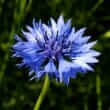Background
- Cornflower (Centaurea cyanus) is native to Europe, where it is considered a weed in fields. However, it is also used as an ornamental flower because of its intense blue flowers, and has become naturalized in North America and Australia. Blue cornflower has been used to flavor teas and to reduce ocular inflammation. Some preliminary studies indicate that cornflower may have anti-inflammatory properties, and blue cornflower did reduce the recurrence of urinary tract stones in one clinical trial. However, high-quality clinical studies need to be conducted before blue cornflower can be recommended for any use.
- In European phytotherapy, Centaurea cyanus flower heads are used to treat minor ocular (eye) inflammations.
References
Natural Standard developed the above evidence-based information based on a thorough systematic review of the available scientific articles. For comprehensive information about alternative and complementary therapies on the professional level, go to . Selected references are listed below.
- Bablumian IuA. [Antirelapse action of the flowers of the blue cornflower in urolithiasis]. Zh.Eksp.Klin.Med. 1978;18(6):110-114.
View Abstract - Garbacki N, Gloaguen V, Damas J, et al. Anti-inflammatory and immunological effects of Centaurea cyanus flower-heads. J Ethnopharmacol 12-15-1999;68(1-3):235-241.
View Abstract - Sarker SD, Laird A, Nahar L, et al. Indole alkaloids from the seeds of Centaurea cyanus (Asteraceae). Phytochemistry 2001;57(8):1273-1276.
View Abstract - Shiono M, Matsugaki N, Takeda K. Phytochemistry: structure of the blue cornflower pigment. Nature 8-11-2005;436(7052):791.
View Abstract - Takeda K, Osakabe A, Saito S, et al. Components of protocyanin, a blue pigment from the blue flowers of Centaurea cyanus. Phytochemistry 2005;66(13):1607-1613.
View Abstract







